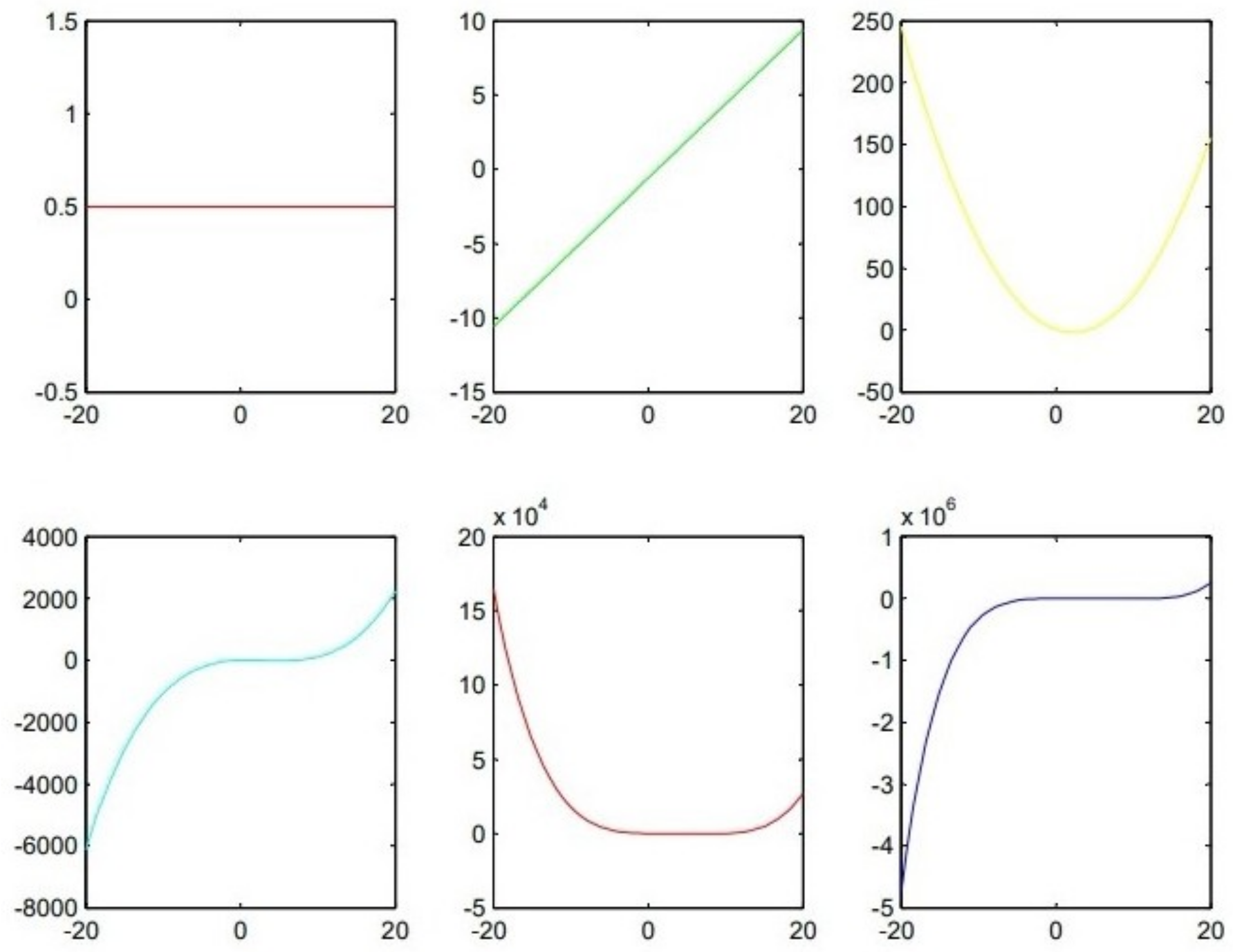New Classes of Degenerate Unified Polynomials
Abstract
1. Introduction
2. Preliminaries
3. New Classes of Degenerate Unified Polynomials
4. Properties
- (a)
- (b)
Author Contributions
Funding
Data Availability Statement
Conflicts of Interest
References
- Abramowitz, M.; Stegun, I. Handbook of Mathematical Functions with Formulas, Graphs, and Mathematical Tables; US Government Printing Office: Washington, DC, USA, 1964; Volume 55.
- Apostol, T.M. Introduction to Analytic Number Theory; Springer Science & Business Media: Berlin, Germany, 1998. [Google Scholar]
- Graham, R.L.; Knuth, D.E.; Patashnik, O.; Liu, S. Concrete mathematics: A foundation for computer science. Comput. Phys. 1989, 3, 106–107. [Google Scholar] [CrossRef]
- Hernández-Llanos, P.; Quintana, Y.; Urieles, A. About Extensions Of Generalized Apostol-type polynomials. Results Math. 2015, 68, 203–225. [Google Scholar] [CrossRef]
- Kurt, B. A further generalization of the Bernoulli polynomials and on the 2D–Bernoulli polynomials . Appl. Math. Sci. 2010, 47, 2315–2322. [Google Scholar]
- Ramírez, W.; Cesarano, C.; Díaz, S. New results for degenerated generalized Apostol-Bernoulli, Apostol-Euler and Apostol-Genocchi polynomials. WSEAS Trans. Math. 2022, 21, 604–608. [Google Scholar] [CrossRef]
- Ramírez, W.; Castilla, L.; Urieles, A. An extended generalized-extensions for the Apostol Type polynomial. Abstr. Appl. Anal. 2018, 2018, 2937950. [Google Scholar]
- Guo-Dong, L.; Srivastava, H.M. Explicit formulas for the Norlund polynomials Bn(x) and bn(x). Comput. Math. Appl. 2006, 51, 1377–1384. [Google Scholar]
- Horadam, A.F. Negative order Genocchi polynomials. Fibonacci Quart. 1992, 30, 21–34. [Google Scholar]
- Apostol, T.M. On the Lerch zeta function. Pac. J. Math. 1951, 1, 161–167. [Google Scholar] [CrossRef]
- Luo, Q.-M.; Srivastava, H.M. Some generalizations of the Apostol–Bernoulli and Apostol–Euler polynomials. J. Math. Anal. Appl. 2005, 308, 290–302. [Google Scholar] [CrossRef]
- Luo, Q.-M. Apostol-Euler polynomials of higher order and Gaussian hypergeometric functions. Taiwan. J. Math. 2006, 10, 917–925. [Google Scholar] [CrossRef]
- Srivastava, H.M. Some generalizations and basic (or q-) extensions of the Bernoulli, Euler and Genocchi polynomials. Appl. Math. Inf. Sci. 2011, 5, 390–444. [Google Scholar]
- Belbachir, H.; Djemmada, Y.; Hadj-Brahim, S. Unified Bernoulli-Euler polynomials of Apostol type. Indian J. Pure Appl. Math. 2022, 1–8. [Google Scholar] [CrossRef]
- Bedoya, D.; Ortega, M.; Ramírez, W.; Urieles, A. New results parametric Apostol-type Frobenius-Euler polynomials and their matrix approach. Kragujev. J. Math. 2025, 49, 411–429. [Google Scholar]
- Araci, S.; Acikgoz, M. Construction of fourier expansion of Apostol Frobenius-Euler polynomials and its applications. Adv. Differ. Equ. 2018, 2018, 1–14. [Google Scholar] [CrossRef]
- Andrews, L.C. Special Functions of Mathematics for Engineers; SPIE Press: Bellingham, WA, USA, 1998; Volume 49. [Google Scholar]
- Cesarano, C.; Ramírez, W.; Khan, S. A new class of degenerate Apostol–type Hermite polynomials and applications. Dolomites Res. Notes Approx. 2022, 15, 1–10. [Google Scholar]
- Hwang, K.W.; Ryoo, C.S. Some identities involving two-variable partially degenerate Hermite polynomials induced from differential equations and structure of their roots. Mathematics 2020, 8, 632. [Google Scholar] [CrossRef]
- Khan, S.; Nahid, T.; Riyasat, M. On degenerate Apostol-type polynomials and applications. Bol. Soc. Matemática Mex. 2019, 25, 509–528. [Google Scholar] [CrossRef]
- Carlitz, L. A degenerate Staudt–Clausen theorem. Arch. Math. 1956, 7, 28–33. [Google Scholar] [CrossRef]
- Kim, T.; Kim, D.S. Identities involving degenerate Euler numbers and polynomials arising from nonlinear differential equations. J. Nonlinear Sci. Appl. 2016, 9, 2086–2098. [Google Scholar] [CrossRef]
- Lim, D. Some identities of degenerate Genocchi polynomials. Bull. Korean Math. Soc. 2016, 53, 569–579. [Google Scholar] [CrossRef]
- Gradshteyn, I.S.; Ryzhik, I.M. Table of Integrals, Series, and Products, 7th ed.; Academic Press, Inc.: San Diego, CA, USA, 2007. [Google Scholar]
- Bloch, E.D. The Real Numbers and Real Analysis; Springer: New York, NY, USA; Dordrecht, The Netherlands; Heidelberg, Geremnay; London, UK, 2011. [Google Scholar]
- Aigner, M. Diskrete Mathematik, 6th ed.; Friedr. Vieweg & Sohn: Berlin, Germany, 2006. [Google Scholar]
- Kim, T. A note on degenerate Stirling polynomials of the second kind. Proc. Jangjeon Math. Soc. 2017, 20, 319–331. [Google Scholar]


| Parameters | Generating Functions | Polynomials |
|---|---|---|
| , , , | The DBP | |
| , | The DEP | |
| , , | the DGP | |
| , , , , | The DFEP |
| Parameters | Generating Functions | Polynomials |
|---|---|---|
| , and | The ABP of order | |
| and | The AEP of order | |
| , , , and | The AGP of order |
| Parameters | Generating Functions | Polynomials |
|---|---|---|
| , , and | The BP | |
| , , and | The EP | |
| , , and | The GP |
| Parameters | Generating Functions | Polynomials |
|---|---|---|
| , , , , and | The FEP |
Disclaimer/Publisher’s Note: The statements, opinions and data contained in all publications are solely those of the individual author(s) and contributor(s) and not of MDPI and/or the editor(s). MDPI and/or the editor(s) disclaim responsibility for any injury to people or property resulting from any ideas, methods, instructions or products referred to in the content. |
© 2022 by the authors. Licensee MDPI, Basel, Switzerland. This article is an open access article distributed under the terms and conditions of the Creative Commons Attribution (CC BY) license (https://creativecommons.org/licenses/by/4.0/).
Share and Cite
Bedoya, D.; Cesarano, C.; Díaz, S.; Ramírez, W. New Classes of Degenerate Unified Polynomials. Axioms 2023, 12, 21. https://doi.org/10.3390/axioms12010021
Bedoya D, Cesarano C, Díaz S, Ramírez W. New Classes of Degenerate Unified Polynomials. Axioms. 2023; 12(1):21. https://doi.org/10.3390/axioms12010021
Chicago/Turabian StyleBedoya, Daniel, Clemente Cesarano, Stiven Díaz, and William Ramírez. 2023. "New Classes of Degenerate Unified Polynomials" Axioms 12, no. 1: 21. https://doi.org/10.3390/axioms12010021
APA StyleBedoya, D., Cesarano, C., Díaz, S., & Ramírez, W. (2023). New Classes of Degenerate Unified Polynomials. Axioms, 12(1), 21. https://doi.org/10.3390/axioms12010021







